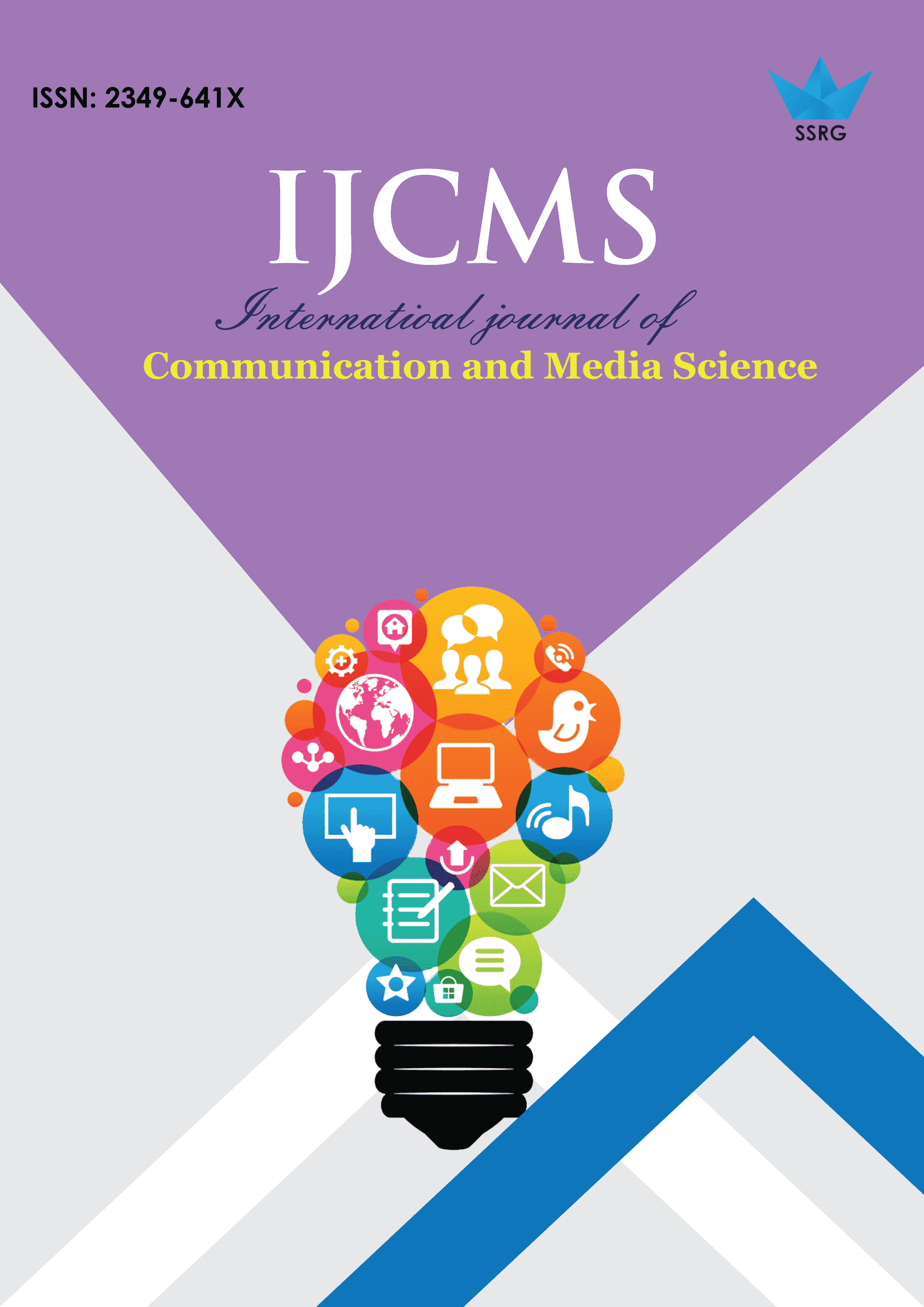Connecting with Homeland: Media Consumption of Afghan Diaspora in India

| International Journal of Communication and Media Science |
| © 2021 by SSRG - IJCMS Journal |
| Volume 8 Issue 2 |
| Year of Publication : 2021 |
| Authors : Gowhar Farooq |
How to Cite?
Gowhar Farooq, "Connecting with Homeland: Media Consumption of Afghan Diaspora in India," SSRG International Journal of Communication and Media Science, vol. 8, no. 2, pp. 1-5, 2021. Crossref, https://doi.org/10.14445/2349641X/IJCMS-V8I2P101
Abstract:
Afghan presence in India dates back centuries. It exists in the form of goods, language, cultural and political influences, and other subtler yet significant forms. The influx of Afghan students, traders, and medical tourists in India, especially post the 2001 regime change in Afghanistan, has given a boost to the relations between the two historical neighbors. The Afghan diaspora in India has, however, maintained its distinct cultural identity through language, food, crafts, and commodity exchanges, giving rise to transnational social formation. In recent years, among other ways, Afghans have maintained these transnational connections through the media. While the transnational flow of Indian media, including its consumption and influence in Afghanistan, has been thoroughly looked into by scholars, the role and influence of Afghan media among the Afghan diaspora in India have largely remained unexplored. This paper looks into how the Afghan diaspora in Delhi engages with media from their homeland. By using ethnographic tropes and by taking a cue from works of transnational media studies, the paper attempts to trace the flows, media consumption, and its influence in keeping the idea of ‘Afghaness’ thriving away from the ‘homeland’.
Keywords:
India, Afghanistan, Media, and Cultural Studies, Digital Media, Diaspora, Transnational Studies.
References:
[1] Agence France-Presse. (2019). Zahra Elham becomes 1st woman to win on Afghan Star. Retrieved May 13, (2019) from Salaam Times website: https://afghanistan.asia-news.com/en_GB/articles /cnmi_st/features/2019/03/22/feature-03
[2] Anderson, B., Affective atmospheres. Emotion, Space and Society, 2(2) (2009) 77–81.
[3] Ashraf, Fahmida.,INDIA-AFGHANISTAN RELATIONS: POST-9/11.” Strategic Studies 27(2) (2007) 90–102.
[4] Facebook, Dr. Tokhi. توخی فهیم داکتر . Retrieved May 13, 2020, from https://www.facebook.com/Tokhi.official/
[5] Facebook, Shirzad Abu Moslim Shirzad. Retrieved May 13, 2020, from https://www.facebook.com/abumoslim.shirzad/
[6] Faist, T. (2010). Diaspora and Transnationalism: Concepts, Theories, and Methods
[7] IANS. (2019, January 10). 17 Journalists were killed in Afghanistan in 2018. Business Standard India. Retrieved from https://www.business-standard.com/article/news-ians/17-journalists-killed-in- Afghanistan-in-2018-119011000803_1.html
[8] Levitt, P., & Schiller, N. G. (2004). Conceptualizing Simultaneity: A Transnational Social Field Perspective on Society1. International Migration Review, 38(3) 1002–1039.
[9] Malaviya, A. (2016). International Convention of Asia Scholars |
Accelerating Research in Asian Studies since (1997). Retrieved August 3, (2019) from https://icas.asia/en/border-and- belongingness-ethnographic-study-afghan-refugees-India
[10] Purushothaman, U. (2010). Shifting Perceptions of Power: Soft Power and India’s Foreign Policy | ORF. Retrieved May 12, (2020) from https://www.orfonline.org/research/shifting- perceptions-of-power-soft-power-and-indias-foreign-policy/
[11] Roshan, N. (2019.). Nabi Roshan / روشن نبی . Retrieved May 13, (2020) from YouTube website: https://www.youtube.com/channel/UC_DVIsHsSWl5n3yTpJObf9Q
[12] Torfeh, Massoumeh., Media Development in Afghanistan., Media Development LVI (1) (2009).
[13] Warsi, S. K., Being and belonging in Delhi: Afghan individuals and communities in a global city (Ph.D., SOAS University of London). Retrieved from https://eprints.soas.ac.uk/22782/ (2015).

 10.14445/2349641X/IJCMS-V8I2P101
10.14445/2349641X/IJCMS-V8I2P101